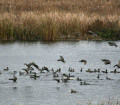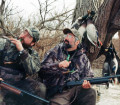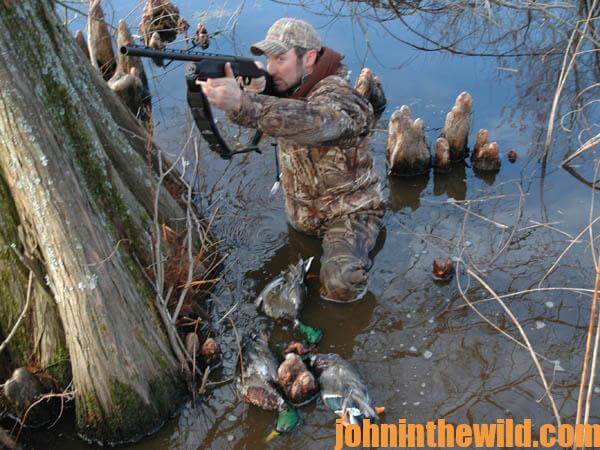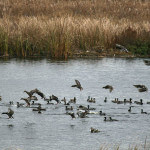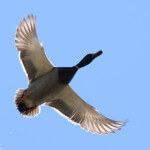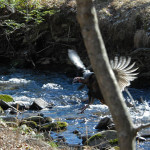John’s Note: I really enjoy classic waterfowling. I like hunting from a blind, using 50 or more decoys, having a retriever pick-up the ducks and sharing the experience with a good hunting buddy. However, classic waterfowling requires too much equipment and doesn’t allow me as much mobility as I have when surprising ducks in flooded timber. Open-water hunting for waterfowl also requires that you live near or travel to big water. Throughout most of the South where I live, you’ll find little potholes and streams, flooded-timber areas and woods ponds where ducks will feed and hold, especially during a cold winter. You can hunt anywhere where you find enough water to float ducks and enough food to feed them. I enjoy hunting ducks. When I make a long stalk to take birds as they come off the water, I feel more satisfied than I do when I put out a decoy spread and blow a duck call, until some feathered phantom gets curious enough to see what’s happening. If you want to enjoy waterfowling without all the hassles, try these surprise tactics to take webfoots.
Mid-Day Loafing Areas:
If ducks feel much hunting pressure on open water, especially in the early morning, or if the big water becomes rough in the afternoon, the ducks will pull into a small, flooded-timber area or shallow-creek region to hang out. They’re interested primarily in dodging the weather and socializing, not feeding. You’ll find these wary ducks the most difficult to stalk, because they’ll watch everything in the area and spread out much more than when feeding. You’ll usually get only one chance at the ducks when you flush them from a loafing site. More than likely, they won’t come back to the same spot that day.
Roosting Sit es:
es:
For an exciting way to stalk ducks, hunt roosts. Look for a small body of water like a beaver pond, a flooded-timber area or a calm-water section along a small stream where ducks like to roost. You often can stalk in close in these regions to experience some of the finest duck hunting you’ll ever have. Once you locate a well-established roost, the ducks generally will continue to fly into that site until black-dark. I do have one caution if you plan to hunt a roost site. Know when legal shooting hours end. Because so many ducks come in late in the afternoon, you easily can find yourself shooting after legal sunset, which violates the law. To prevent this problem, I wear a watch with an alarm. When the alarm goes off, it probably will spook the ducks I’ve attempted to sneak up on, and remind me at the same time to stop shooting. Then I don’t violate the law. I usually set my watch alarm 5-minutes ahead of the end of legal shooting time.
To learn more about preparing ducks and other wild game besides seafood and fish from our family’s recipes from the past 45+ years, get John and Denise Phillips’ new eBook “The Best Wild Game & Seafood Cookbook Ever: 350 Southern Recipes for Deer, Turkey, Fish, Seafood, Small Game and Birds.” Click here to get this book
About the Author
John Phillips, winner of the 2012 Homer Circle Fishing Award for outstanding fishing writer by the American Sportfishing Association (AMA) and the Professional Outdoor Media Association (POMA), the 2008 Crossbow Communicator of the year and the 2007 Legendary Communicator chosen for induction into the National Fresh Water Hall of Fame, is a freelance writer (over 6,000 magazine articles for about 100 magazines and several thousand newspaper columns published), magazine editor, photographer for print media as well as industry catalogues (over 25,000 photos published), lecturer, outdoor consultant, marketing consultant, book author and daily internet content provider with an overview of the outdoors. Click here for more information and a list of all the books available from John E. Phillips.

